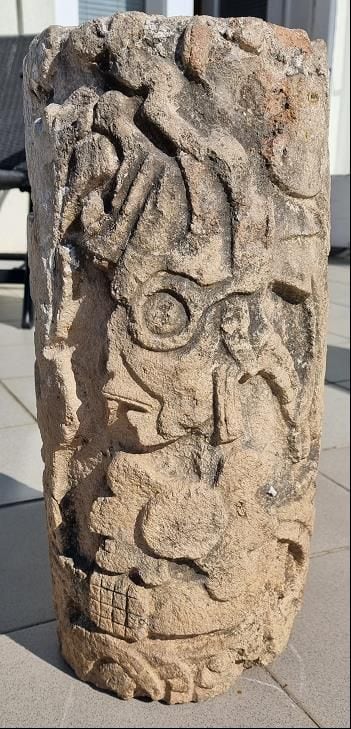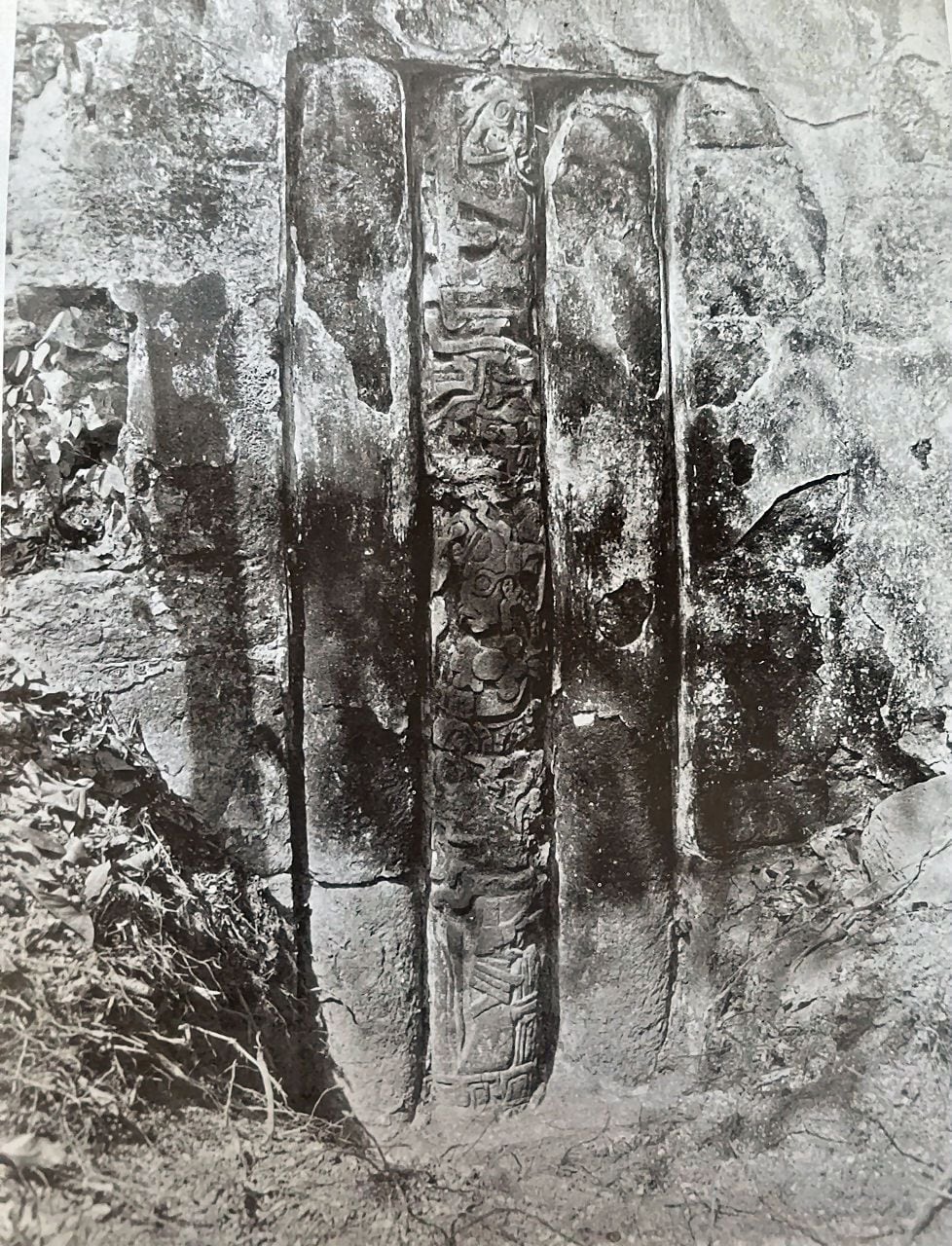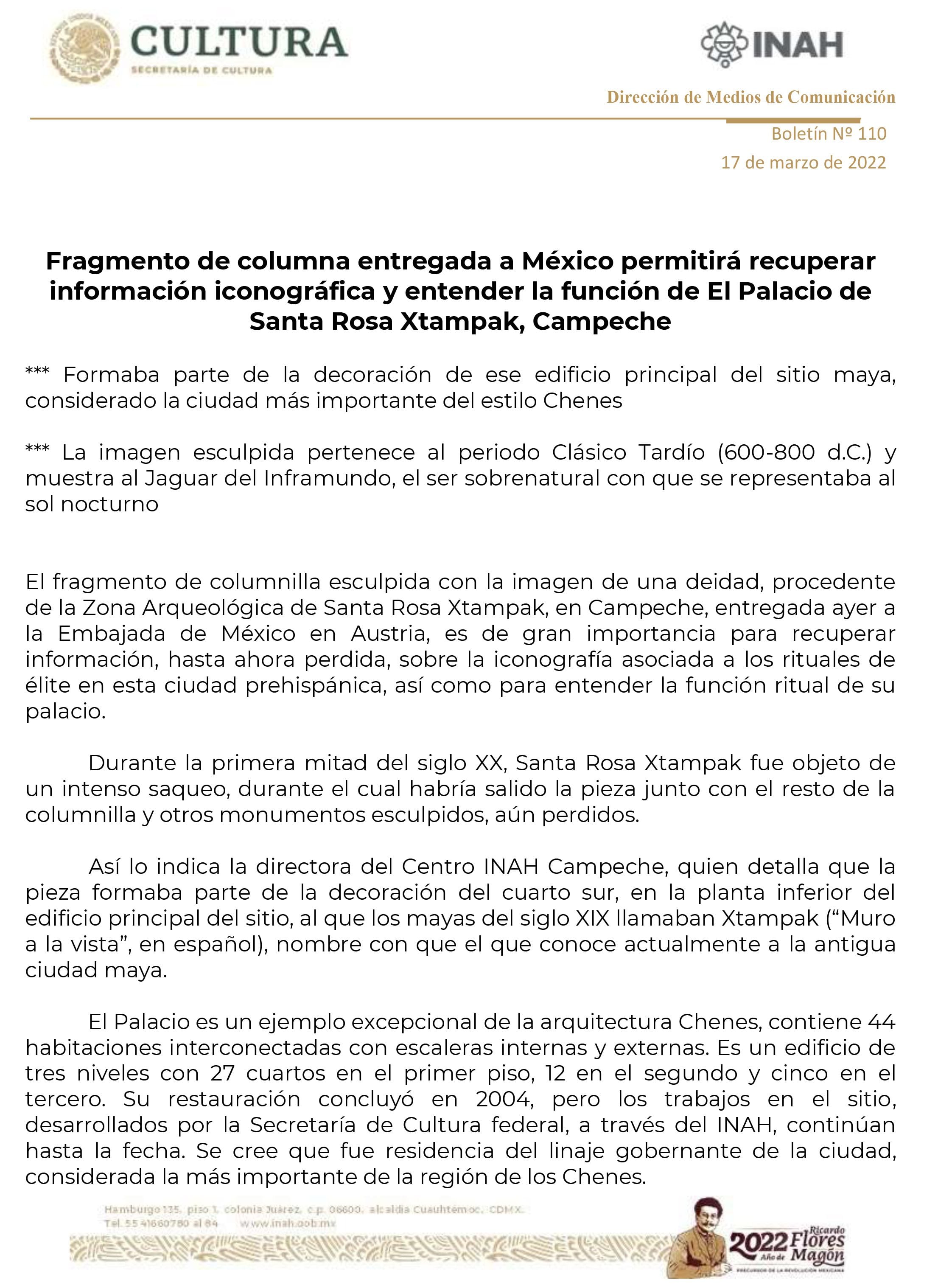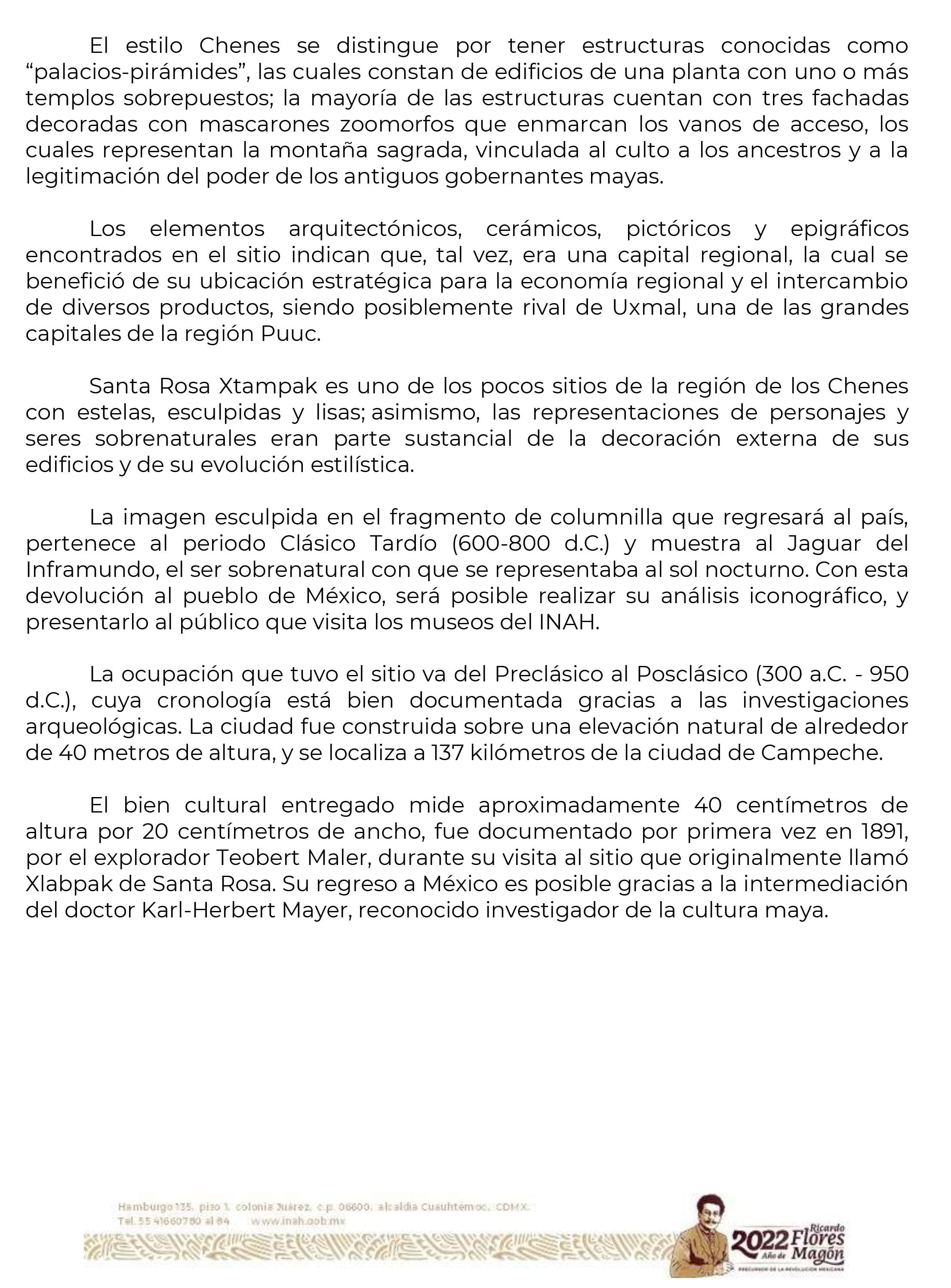
Recently, the Secretariats of Culture and Foreign Affairs announced that the country had recovered an archaeological piece that was in the hands of an anonymous collector in Austria. This is a fragment of column weighing approximately 26 kilos that was extracted from the archaeological site of Santa Rosa Xtampak, Campeche.
The same agencies reported in a statement the importance of this artifact. It was possible to identify that the piece has the image of an important deity that “was part of the decoration of that main building of the Mayan site, considered the most important city of the Chenes style”.
The document issued on March 17, 2022 details that the sculpted image belongs to the Late Classic period, which covers from 600 to 800 AD and “shows the Jaguar of the Underworld, the supernatural being with which the night sun was depicted”.

In addition, the director of the INAH Campeche Center explained that during the first half of the 20th century, Santa Rosa Xtampak was subjected to intense looting, which was why various objects disappeared, including “the rest of the column and other sculpted monuments, still lost”.
He also said that the piece found was part of the decoration of the southern quarter, on the lower floor of the main building of the site, “which the 19th century Mayans called Xtampak (“Wall in sight”), the name by which he now knows the ancient Mayan city”.
It was also emphasized that the building in question is an example of the impressive Chenes architecture, which has 44 rooms interconnected with internal and external stairs. The construction consists of a three-storey building with 27 rooms on the first floor, 12 on the second floor and five on the third floor.
It was added that although the restoration of the site was completed in 2004, work by the federal Secretariat of Culture and the National Institute of Anthropology and History (INAH) continues to date. On the other hand, thanks to the studies carried out, it has been possible to conclude that it was possibly “the residence of the ruling lineage of the city, considered the most important in the Chenes region”.

As explained, the Chenes style is distinguished by having structures known as “palaces-pyramids”, which consist of one-story buildings with one or more temples superimposed; most of the structures “have three facades decorated with zoomorphic masks that frame the access spans, which represent the mountain sacred, linked to the worship of ancestors and the legitimization of the power of the ancient Mayan rulers”.
Another hypothesis of the experts points out that the elements of architecture, painting and ceramics indicate that - most likely - it was a regional capital that had economic benefits due to its privileged location that allowed the exchange of various products, “possibly being a rival of Uxmal, one of the major capitals of the Puuc region”.
On the other hand, it was emphasized that Santa Rosa Xtampak is one of the few sites in the Chenes region with stelae, sculpted and smooth; likewise, the representations of characters and supernatural beings were a substantial part of the external decoration of its buildings and their stylistic evolution.


Thanks to archaeological research, it can be said that the occupation of the site was from the Preclassic to the Postclassic period (300 BC - 950 AD). The city was built on a natural elevation of about 40 meters high, and is located 137 kilometers from the city of Campeche.
Finally, it was specified that the piece recovered from the European country measures approximately 40 centimeters high by 20 centimeters wide and was first documented in 1891, by explorer Teobert Maler, during his visit to the site that he originally called Xlabpak de Santa Rosa. It should be noted that the return of the piece was made possible thanks to the intermediation of Dr. Karl-Herbert Mayer, a renowned researcher of Mayan culture.
KEEP READING:
Últimas Noticias
Debanhi Escobar: they secured the motel where she was found lifeless in a cistern
Members of the Specialized Prosecutor's Office in Nuevo León secured the Nueva Castilla Motel as part of the investigations into the case

The oldest person in the world died at the age of 119
Kane Tanaka lived in Japan. She was born six months earlier than George Orwell, the same year that the Wright brothers first flew, and Marie Curie became the first woman to win a Nobel Prize

Macabre find in CDMX: they left a body bagged and tied in a taxi
The body was left in the back seats of the car. It was covered with black bags and tied with industrial tape
The eagles of America will face Manchester City in a duel of legends. Here are the details
The top Mexican football champion will play a match with Pep Guardiola's squad in the Lone Star Cup

Why is it good to bring dogs out to know the world when they are puppies
A so-called protection against the spread of diseases threatens the integral development of dogs




